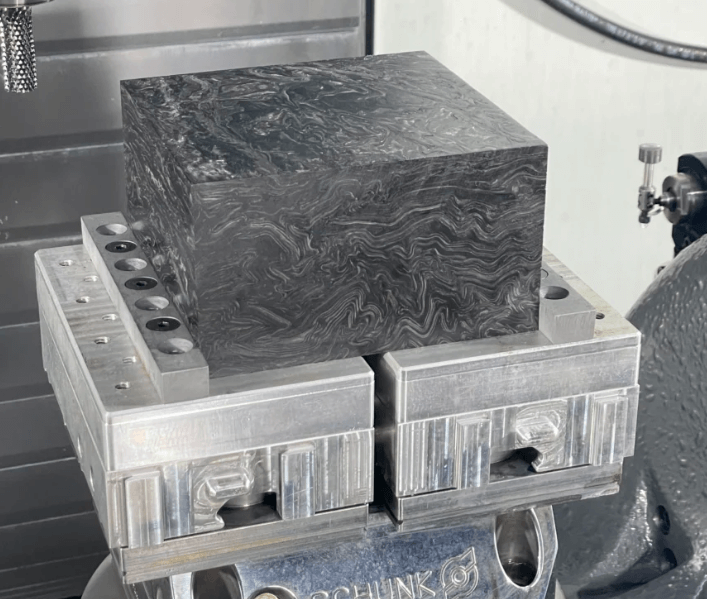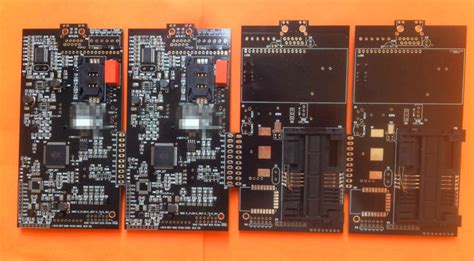Streamlining Your Project with Custom Electronic Assembly Solutions
Key Takeaways
Custom electronic assembly, particularly PCB assembly processes, plays a crucial role in achieving project efficiency and cost-effectiveness. By opting for tailored solutions in PCBA, companies can streamline their operational workflows significantly. The benefits of custom electronic assembly extend beyond simple cost reduction; they also encompass improved product quality and faster time-to-market.
Incorporating these custom electronic assembly solutions allows businesses to eliminate redundancies, thereby simplifying complex workflows. These tailored strategies often result in lower material waste and enhanced precision during the manufacturing process. Furthermore, embracing modern techniques in PCB assembly ensures that each component is accurately placed and soldered, which is vital for optimizing the overall performance of the final product.
| Benefits of Custom Electronic Assembly | Description |
|---|---|
| Cost Reduction | Efficient processes lead to lower production costs |
| Quality Enhancement | Improved precision reduces defects |
| Streamlined Workflows | Tailored solutions eliminate redundancies |
| Faster Time-to-Market | Increased efficiency accelerates project timelines |
Ultimately, taking advantage of these custom electronic assembly solutions empowers businesses to meet their design goals more effectively. By integrating such innovations into their existing workflows, companies can not only enhance their outcomes but also sustain a competitive edge in the marketplace. Adopting effective PCBA practices fosters an environment of continuous improvement, making it an indispensable aspect of modern manufacturing strategies.
Understanding Custom Electronic Assembly: An Overview
Custom electronic assembly refers to the specialized process of integrating PCB assembly or PCBA techniques to create tailored electronic components and systems that meet specific project requirements. This process encompasses a variety of methods, including surface mount technology (SMT) and through-hole technology, enabling engineers and designers to achieve precision and performance. By opting for custom electronic assembly, businesses can leverage the expertise of specialized providers who bring advanced knowledge of industry standards and best practices, thus ensuring that each project aligns with functional demands and quality expectations. Utilizing such customized solutions not only facilitates improved product quality but also enhances overall project efficiency by minimizing errors during the assembly phase. Furthermore, integrating custom approaches can lead to cost reductions over time, as businesses can avoid expensive missteps that often occur in mass-produced alternatives. Embracing custom PCBA is a pivotal step for organizations aiming to innovate and maintain competitiveness in an ever-evolving technology landscape.
Key Benefits of Custom Electronic Assembly for Your Projects
Custom electronic assembly provides numerous advantages that can significantly boost the efficiency of your projects. One of the key benefits is the optimized pcb assembly process, which allows for a more streamlined production flow. By utilizing tailored solutions in pcba, companies can achieve better resource management and reduce lead times. Additionally, custom electronic assembly empowers businesses to implement more precise manufacturing techniques, leading to an overall enhancement in product quality.
Furthermore, this approach allows for greater flexibility in design modifications during the assembly process, ensuring that projects remain aligned with evolving specifications and customer needs. As highlighted by industry experts, “Leveraging custom electronic assembly enables organizations to adapt quickly while maintaining high standards.”
Incorporating pcb assembly techniques also helps reduce overhead costs by minimizing material waste and maximizing operational efficiency. By embracing these assembled solutions, you are not only able to meet project deadlines but also deliver superior products that stand out in competitive markets. Thus, understanding and applying the benefits of custom electronic assembly can prove transformative for your project outcomes.
Tailored Solutions: How Custom Electronic Assembly Can Streamline Processes
The implementation of custom electronic assembly solutions, particularly through PCB assembly or PCBA, signifies a pivotal advancement in project development. By creating specialized methods designed to meet unique project specifications, businesses can significantly enhance their operational efficiencies. These tailored solutions facilitate a more cohesive workflow by reducing the need for lengthy revisions and reworks, which often hamper project timelines. The precision inherent in custom electronic assembly, coupled with the flexibility to adapt designs as needed, empowers teams to maintain a streamlined process from concept to completion. Furthermore, this approach allows for early identification and resolution of potential issues, ultimately leading to superior product quality and reduced lead times. As companies integrate these approaches into their development cycles, they find that it’s not merely about assembling components; it’s about fostering an environment where innovation flourishes while keeping costs manageable and enhancing overall efficiency in the manufacturing landscape.
Cost Reduction Strategies Through Custom Electronic Assembly
Implementing custom electronic assembly (often referred to as PCBA) can significantly contribute to cost reduction in various projects. One of the primary ways this is achieved is through the meticulous optimization of the pcb assembly process. By employing tailored methods, businesses can minimize material waste and reduce labor costs. For instance, using advanced automation in the pcba process allows for quicker and more efficient production cycles, which directly impacts overhead costs positively. Additionally, sourcing components in bulk through a streamlined assembly framework often results in lower procurement expenses. Another crucial aspect is the versatility of custom electronic assembly, which enables businesses to adapt their designs without incurring hefty redesign costs, thus providing flexibility and encouraging innovation within budget constraints. Moreover, the inherent improved quality control associated with a well-designed assembly process minimizes defects and reduces the likelihood of costly rework or returns, fundamentally supporting long-term financial effectiveness. This integrated approach not only facilitates immediate savings but also lays a foundation for sustainable growth and efficiency within your operational framework.
Enhancing Product Quality with Custom Electronic Assembly Techniques
The integration of custom electronic assembly techniques plays a pivotal role in elevating the overall quality of products. By adopting specialized PCB assembly methods, businesses can achieve a higher level of precision and consistency in their manufacturing processes. One key benefit is the utilization of tailored processes that align closely with specific design requirements, minimizing the risk of defects. Moreover, efficiency is enhanced when using advanced PCBA technology, as it allows for improved component placement and soldering techniques that adhere to strict industry standards. This not only helps in producing durable and reliable products but also ensures that performance metrics are consistently met or exceeded. Adopting these custom electronic assembly solutions enables businesses to maintain strict quality controls throughout production cycles, resulting in significant improvements in both the aesthetics and functionality of the final product. Overall, implementing these techniques not only enhances product quality but also boosts customer satisfaction by delivering dependable solutions tailored to meet consumer needs.
Empowering Your Design Goals with Effective Assembly Solutions
Custom electronic assembly plays a pivotal role in empowering businesses to meet their design goals efficiently. By leveraging pcb assembly and pcba services, organizations can significantly enhance both the operational efficiency and the quality of their output. One of the key advantages of effectively integrating custom electronic assembly solutions is their ability to streamline numerous processes involved in product development. From simplifying sourcing components to minimizing assembly time, tailored solutions allow for a more cohesive workflow that adapts to unique project requirements. Moreover, these services often include advanced techniques that enhance product quality—ensuring that each unit meets or exceeds client expectations. Throughout the assembly process, employing state-of-the-art technology can identify potential issues early on, thereby reducing the risk of costly rework or delays. This synergy not only helps in achieving design objectives effectively but also optimizes resource allocation, further reducing overall project costs. In essence, adopting custom electronic assembly solutions positions businesses to better navigate challenges and capitalize on opportunities in today’s competitive landscape.
Integrating Custom Electronic Assembly into Your Workflow
Integrating custom electronic assembly into your workflow can significantly enhance the efficiency of your project. By adopting pcb assembly practices, businesses can streamline a myriad of processes that are essential to production. For instance, employing tailored pcba solutions ensures that assembly lines operate more smoothly and with fewer errors, which translates directly into improved turnaround times. By utilizing automated systems and advanced technologies in the assembly process, companies can not only reduce the labor costs associated with manual assembly but also enhance precision and reduce material wastage. This integration allows teams to focus on inventive design elements, as routine assembly tasks become more efficient and less time-consuming. Furthermore, aligning your workflow with custom electronic assembly solutions enables a seamless connection between design and production phases, promoting collaboration amongst various departments and facilitating quicker iterations and adjustments based on market feedback. As a result, the integration of these processes empowers businesses to meet their design goals while maintaining high standards of quality in their final products.
Case Studies: Successful Implementations of Custom Electronic Assembly
In the realm of custom electronic assembly, numerous businesses have successfully harnessed the capabilities of pcb assembly and pcba processes to achieve remarkable results. For instance, a leading manufacturer in the consumer electronics sector greatly improved their production efficiency by adopting tailored solutions that specifically addressed their unique operational challenges. They partnered with a custom assembly service provider to design and implement an advanced pcb assembly line that not only reduced the turnaround time but also significantly minimized errors in component placement. This strategic move led to an impressive reduction in waste and costs, ultimately enhancing their overall product quality.
Another case worth noting is that of a medical device company, which faced stringent compliance standards and high expectations for reliability. By integrating custom electronic assembly solutions into their workflow, they could customize their pcba processes to ensure that each element met industry regulations while accommodating rapid changes in design requirements. The result was not only improved regulatory compliance but also a more agile response to market demands, showcasing how flexible assembly solutions can directly contribute to achieving ambitious design and production goals. Through these illustrations, it becomes evident how effective implementations of custom electronic assembly can drive operational excellence and foster innovation across diverse sectors.
Conclusion
In summary, custom electronic assembly offers significant advantages for businesses seeking to streamline their project workflows. By leveraging pcb assembly techniques, companies can achieve higher efficiency and reduce operational costs. The flexibility of pcba services allows for tailored solutions that cater specifically to individual project requirements, ensuring that each stage of production aligns perfectly with design goals. Furthermore, integrating these custom solutions not only enhances product quality but also fosters innovation by enabling rapid prototyping and iteration. As industries continue to evolve, embracing custom electronic assembly will be crucial for maintaining competitive advantages and meeting the demands of the market. By understanding the pivotal role of custom electronic assembly, companies can fully realize the potential of their designs and deliver exceptional products that resonate with consumers and succeed in a crowded marketplace.
FAQs
What is custom electronic assembly?
Custom electronic assembly refers to the process of producing custom printed circuit boards (PCBs) to meet specific design requirements. This includes various processes such as PCB assembly (also known as PCBA), where electronic components are soldered onto the printed circuit boards, ensuring that they function correctly and efficiently for the intended application.
How can custom electronic assembly enhance project efficiency?
By using tailored solutions, custom electronic assembly can streamline workflows and reduce production time. This helps in achieving project milestones more effectively, ultimately leading to faster time-to-market for products.
What are the main benefits of using custom electronic assembly in projects?
The primary benefits include cost reduction, improved product quality, and enhanced flexibility in design. These advantages support businesses by optimizing their manufacturing processes and ensuring that devices meet rigorous performance standards.
How does custom electronic assembly reduce costs?
Through efficient resource management and advanced manufacturing techniques, custom electronic assembly minimizes waste and allows for more economical use of materials. Automating certain processes further contributes to lowering production costs without compromising quality.
What techniques are used to enhance product quality in custom electronic assembly?
Various quality assurance practices, including rigorous testing protocols and adherence to industry standards, help improve the reliability and performance of assembled products. Techniques such as surface mount technology (SMT) further ensure that components are placed accurately on the pcb assembly, enhancing overall device longevity.






